
As families and friends again congregated on Independence Day in Riverton, inevitably many paused to reflect on other Fourths of days gone by.
No doubt this year’s Parade Marshal Mrs. Elsie Waters has stored up many memories since that photo was taken of her and brother John sitting in wonderment at the 1920 July Fourth celebration.
FUN FACT: As July 4 fell on Sunday in 1920, Riverton’s Glorious Fourth was held on Monday the fifth.

Previous posts have addressed the origin and changes in Riverton’s Glorious Fourth over the past 116 years since the parade began in 1897, much of it gleaned from the research of Mrs. Betty B. Hahle, Town Historian, now passed. More than 100 of her signature “Yesterday” columns written for the Historical Society of Riverton’s newsletter, the Gaslight News still serve as the most authoritative record of our town’s early days.
 This previously posted four-page 1920 Program (above, right) details the activities enjoyed that day. HSR member Gerald Blaney generously allowed us to scan his rare eBay find and display it here.
This previously posted four-page 1920 Program (above, right) details the activities enjoyed that day. HSR member Gerald Blaney generously allowed us to scan his rare eBay find and display it here.
The July 1920 New Era issues, just digitalized through a joint Riverton Free Library and HSR project late in 2012, provide new insights into Independence Day festivities for that year.

The clipping at left from the July 2, 1920 New Era newspaper advises readers of two added features to the program that included a presentation of gold rings to veterans of World War I.
Later, the New Era recapped the results of the many games and summarized the patriotic observances witnessed by “fully five-thousand men, women, and children.” The Children’s Parade had 792 kids vying for prizes such as best decorated baby coach, velocipede, or kiddie car.

Children gathered on the riverbank and scrambled as a Curtiss F. Boat hydroplane brought over for the occasion showered them with hundreds of tickets good for merchandise at either one of three local stores.
You can see the issue as a PDF file just as it appeared to Rivertonians 93 years ago. (You will need the free Adobe Reader program if you do not have Adobe Acrobat.) Scroll down to see PDF page 3 For the July 2 issue and PDF page 7 for the July 9, 1920 issue.

Were they the good ol’ days? Absolutely.
However, we do not dwell on the past, but simply acknowledge it as we value the contributions of those countless citizens who have helped Riverton develop into the unique place it is today.
The following photos and video demonstrate that for many, the experiences of this July 4, 2013 may just as well be recalled in the not too distant future as “the good ol’ days.” Absolutely!
Photographer Richard W. Pringle, Jr. kindly sent these photos that include a few great close-ups.
Here is a 4min:11sec, 239MB Windows Media Video File showing some highlights of the parade.

You never know who you will meet on the Fourth. Here is my former Riverton School colleague and snow cone entrepreneur, Wade McDaniels. After selling the frosty confections here for over twenty years, I guess that feat qualifies Mr. McDaniels to be included in the record of Riverton history.
Read more about my friend Wade in the phillyburbs.com post by Burlington County Times Staff Writer Peg Quann. She interviewed the coolest Riverton School maintenance supervisor who has been moonlighting on this summer job since his first gig selling at a Beach Boys concert in Philadelphia during the 1976 Bicentennial. Chilly treats a tradition on Riverton’s Fourth by Peg Quann
The image gallery below illustrates what we remember in any typical Riverton Fourth of July observance: family, friends, flags, festivities, fire engines, fun, and food. What does a Classic Riverton Fourth of July mean to you?
The Fourth is often a time for reconnecting with others who have put some miles and years between themselves and their old hometown. Palmyra native and PHS alum Gary Weart stopped by to see Phyllis Rodgers and family while vacationing from his home in South Carolina. Here he is talking to Phyllis as she tallies the 320 children participating in this year’s parade.

It turns out the former teacher, whose great-grandfather James Taylor Weart served as Palmyra’s first mayor from 1923-1928, is a keen photo enthusiast who captures images with a truly memorable perspective.
Enjoy this slideshow by Mr. Gary Weart, book author, former social studies teacher, administrator, and athletic coach who founded Students Against Violence Everywhere (SAVE), and received the Presidential Service Award from President Bill Clinton.
There is still a little room left here for your own memories and recollections of July Fourth – actually for any year at all that you wish to share. Just contact us at rivertonhistory@usa.com – John McCormick
P.S.: This just in from Tracy Hansen Foedisch – more photos at http://riverton4thofjuly.com/photo_gallery2013.html































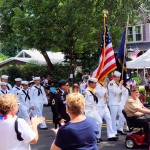

















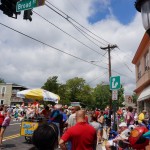














![display in front of old post office 2012 [768x768]](https://rivertonhistory.com/wp-content/uploads/2012/07/display-in-front-of-old-post-office-2012-768x768-300x300.jpg)
![2012 July 4 program cover [377x600]](https://rivertonhistory.com/wp-content/uploads/2012/07/2012-July-4-program-cover-377x600-188x300.jpg)
![Fred_Moore_Center_1872 [787x1200]](https://rivertonhistory.com/wp-content/uploads/2012/07/Fred_Moore_Center_1872-787x1200-196x300.jpg)
![Riverton Baseball Team 1872 [1024x687]](https://rivertonhistory.com/wp-content/uploads/2012/07/Riverton-Baseball-Team-1872-1024x687-300x201.jpg)



![Tristate HVAC 2012 [1024x681]](https://rivertonhistory.com/wp-content/uploads/2012/07/Tristate-HVAC-2012-1024x681-300x199.jpg)
![Treasure Day 2012_1 [1600x664]](https://rivertonhistory.com/wp-content/uploads/2012/05/Treasure-Day-2012_1-1600x664-1024x424.jpg)


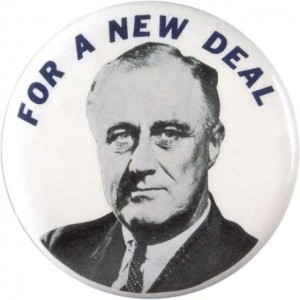



![Mrs. J.D. Eisele Rose Dreer Garden Book 1934, pg 167 [1171x1200]](https://rivertonhistory.com/wp-content/uploads/2012/03/Mrs.-J.D.-Eisele-Rose-Dreer-Garden-Book-1934-pg-167-1171x1200-292x300.jpg)


![Original Calvary Presbyterian Church [1600x1008]](https://rivertonhistory.com/wp-content/uploads/2012/03/Original-Calvary-Presbyterian-Church-1600x1008-300x189.jpg)

![Philadelphia Flower Show medal [768x768]](https://rivertonhistory.com/wp-content/uploads/2012/03/Philadelphia-Flower-Show-medal-768x768-300x300.jpg)

![Dreer rose trial grounds 1932 Garden Book, pg 120 [1600x1015]](https://rivertonhistory.com/wp-content/uploads/2012/03/Dreer-rose-trial-grounds-1932-Garden-Book-pg-120-1600x1015.jpg)
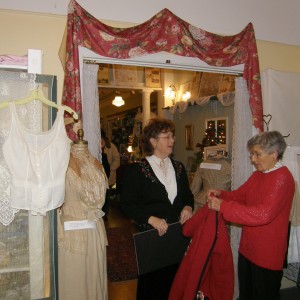
![Daniel Goffredo as scanned and restored [800x600]](https://rivertonhistory.com/wp-content/uploads/2011/12/Daniel-Goffredo-as-scanned-and-restored-800x600-300x208.jpg)
![McDermott Bros L-R - Bill, Paul Carl [1024x768]](https://rivertonhistory.com/wp-content/uploads/2011/12/McDermott-Bros-L-R-Bill-Paul-Carl-1024x768-300x194.jpg)




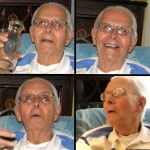

![PRR Station late1930s [1024x683]](https://rivertonhistory.com/wp-content/uploads/2011/12/PRR-Station-late1930s-1024x683-300x200.jpg)

![RYC ice skater_unknown date [1103x768]](https://rivertonhistory.com/wp-content/uploads/2011/01/RYC-ice-skater_unknown-date-1103x7681-150x150.jpg)

![RYC [1024x768]](https://rivertonhistory.com/wp-content/uploads/2011/01/RYC-1024x7681-150x150.jpg)
![404 Main [1152x768]](https://rivertonhistory.com/wp-content/uploads/2011/01/404-Main-1152x7681-150x150.jpg)
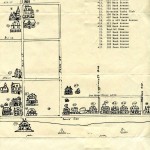

![Thomas Ave2[1155x768]](https://rivertonhistory.com/wp-content/uploads/2011/01/Elm-Terrace2-1155x7681-150x150.jpg)
![Stiles Drug Store, Riverton [800x501]](https://rivertonhistory.com/wp-content/uploads/2011/01/Stiles-Drug-Store-Riverton-800x5011-150x150.jpg)
![Ezra Perkins - Butcher [1024x688]](https://rivertonhistory.com/wp-content/uploads/2011/01/Ezra-Perkins-Butcher-1024x6881-150x150.png)
![New Leaf [1152x768]](https://rivertonhistory.com/wp-content/uploads/2011/01/New-Leaf-1152x7682-150x150.jpg)